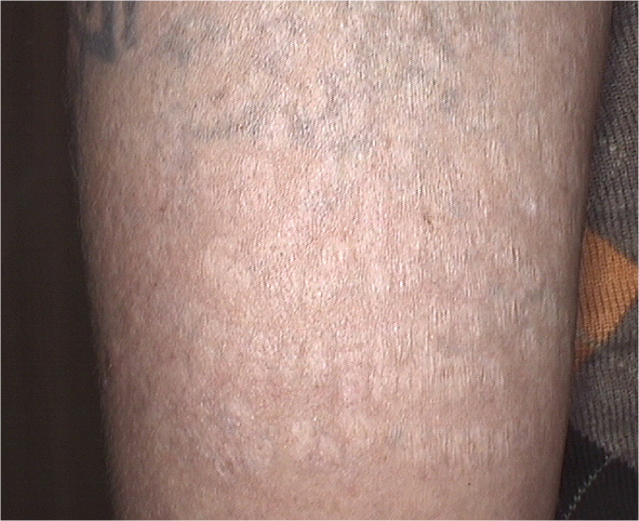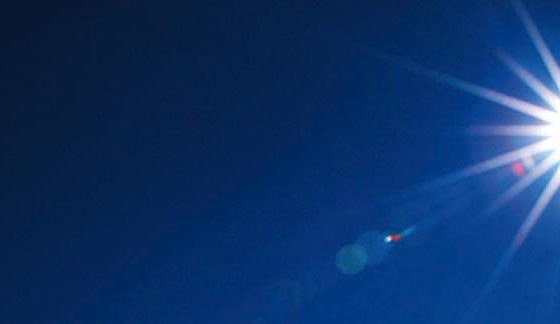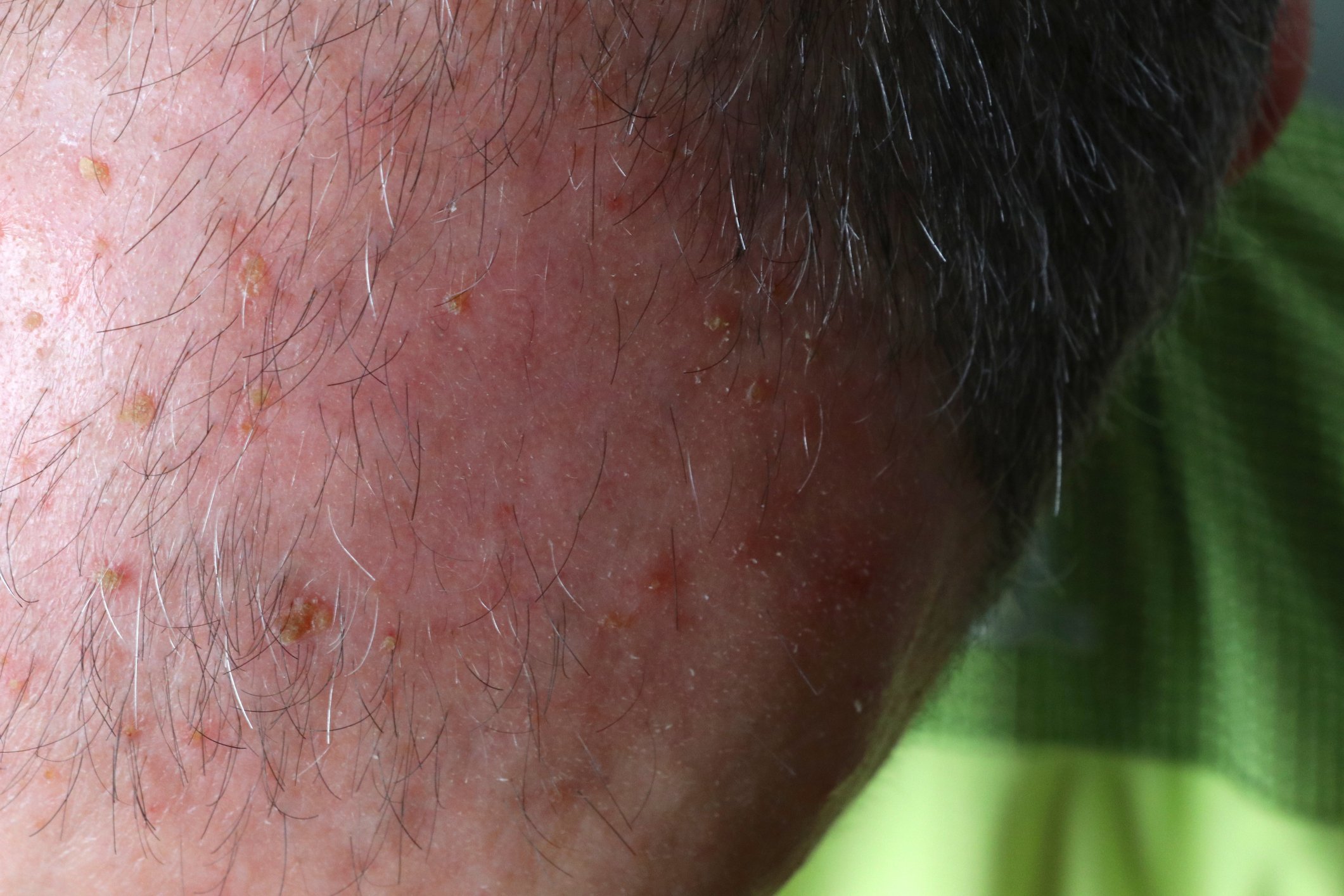Tattoos are becoming more and more popular. Most often, they are inserted into the dermis with an electric tattoo machine in professional studios. If the skin painting is then to be removed again, treatment with Q-switched or Q-switched laser is recommended. This selectively destroys only the stained areas, while the surrounding tissue is not damaged. Thus, in most cases, a scarless tattoo removal is possible.
Skin images are becoming increasingly popular these days: according to a study by the University of Leipzig, one in four people between the ages of 15 and 35 in Germany had a tattoo in 2009 [1]. A comparison with an earlier study by the same institute (2003) shows an increase in tattoos – even more for women than for men. In the USA, according to a broad-based study, 24% of college students were already tattooed in 2006 [2]. Figures from Switzerland are not known.
As different as the functions and meanings of the body markings from the respective epochs and cultures are, as different are the patterns and motifs. A tattoo is not always intentional: by definition, it occurs when color pigments are intentionally or unintentionally introduced into the dermis. For example, an accident may result in an unwanted but permanent staining of the skin by dirt or other particles. When handling weapons, gunpowder sometimes leaves so-called gunshot tattoos, as in the case of patient A (Fig. 1a and b).

Fig. 1) Patient A with gunshot residue tattoo. a) before and b) after treatment with laser
Five different types of tattoos are distinguished(Tab. 1). Among them, professional tattoos are by far the largest group. Today, in most cases, they are applied with an electric tattoo machine, which introduces the ink into the dermis by means of puncture. The colors usually contain metal ions.

Different methods for tattoo removal
The exact percentage of tattooed people who want to remove their body paint is not known. In a dermatological practice, however, tattoo removals are part of everyday business. Sometimes the tattoo is regretted the very next day, in other cases body image and lifestyle have changed so much over the years that the once beloved skin painting eventually no longer fits.
Various methods are practiced for the removal of tattoos: Excision, dermabrasion, lactic acid injection, ablation withCO2 lasers or treatments with IPL. However, all these procedures often lead not only to incomplete removal of the color, but they also leave more or less severe scarring. As an example, we show the burned arm of patient B, who wanted to have her tattoo removed by means of lactic acid injection (Fig. 2).

Fig. 2: Burned arm of patient B after lactic acid injection
However, the removal of tattoos is nowadays possible without scars. The means of first choice for this are the so-called Q-switched or Q-switched lasers. They operate on the principle of selective photothermolysis, where the wavelength is selected according to the target chromophore and the pulse duration must be shorter than the thermal relaxation time. This is the time it takes for a structure to cool to half the temperature it was heated to. This can prevent non-specific heating of the surrounding skin [4]. Proper use of these lasers results in less than 4.5% scarring. The pictures of patient C show a successful tattoo removal without scars (Fig. 3a and b).

Fig. 4: a) Patient D with color change at the eyebrows after laser treatment of a skin-colored overpigmented permanent makeup and b) shortly after the first excision of the discoloration that can no longer be removed by laser. c) shows the result after completed treatment.
Basics of tattoo removal by laser
The laser light is absorbed by the tattoo colors. Black and dark blue colors are the easiest to remove. For multicolor tattoos, it may be necessary to use different wavelengths. Different lasers may even be necessary (Tab. 2).

The penetration depth of the laser light is determined by wavelength and spot size. Longer waves penetrate deeper into the skin. A smaller spot size leads to a smaller penetration depth and greater scattering, which makes it impossible to reach the necessary depth. Therefore, the largest possible spot size that still ensures clinically relevant energies must always be selected.
If a laser no longer produces effective results, the device should be replaced. It makes sense for colleagues to cooperate with each other. Only a few have various Q-switched laser devices in their own practice. The Swiss Society for Medical Laser Applications (www.sgml.ch) has its own working group on this topic.
The laser treatment of tattoos leads to various effects: The pigment is blasted into small fragments, which are then removed by macrophages via phagocytosis on the one hand, and by the lymphatic system on the other [6]. The immediate reaction of laser therapy is the classic white discoloration, as the rapid heating of the pigment leads to a release of gas. Before, during and after treatment, the therapy area should be cooled to reduce non-specific tissue damage.
Complications and problems
If difficult-to-remove tattoos are repeatedly treated, this often leads to fibrosis and skin texture changes that make the response even more difficult. Hypopigmentation, which is particularly long-lasting, has been observed especially after Q-switched Ruby laser treatments. Hyperpigmentation is also feared in darker patients. Here, Nd:YAG lasers are recommended, which better protect the epidermis with their longer wavelength. Pre-treatment with bleaching creams can also be useful. The more sensitive the skin, the longer the treatment intervals should be.
If there is evidence of scarring or hyperpigmentation, Q-switched laser and fractional CO
2
-lasers can be used in the same session. This seems to reduce side effects and improve color or level differences [7]. Allergic reactions to tattoo colors are also possible and are most often observed with the color red. In this case, treatment with Q-switched laser should be avoided, as systemic allergic reactions are possible.
Further, paradoxical dark discolorations are observed under laser. Especially laser treatments of skin-colored overpigmented tattoos – especially permanent makeup on the face – are urgently warned against. The resulting color changes can usually no longer be removed by laser, but must be excised. As in patient D, in whom laser treatments of the blue-green color change on the eyebrows were not satisfactory and only excision brought the desired success (Fig. 4a-c).
Overall, trial therapy is always recommended. This shows how the color reacts. Since ten or more sessions can be expected to remove professional tattoos, it is very important that patients know what to expect. You will have to live with the unfinished tattoo removal for a long period of time, which can be a significant burden especially on the face or other exposed areas.
Health risk dye
Many consumers are unaware that the inks used for their tattoos are not subject to any testing or approval by health authorities. Professional tattoo artists source their dyes from a wide variety of manufacturers around the world. Some of the delivered inks are contaminated or the ingredients are not clearly declared.
In Switzerland, tattooing and the inks used for it were made subject to the Food Act in 2006. In this context, requirements were defined for the chemical and microbiological quality of preservatives, colorants and fragrances, as well as regulations on declaration and labeling. The Swiss requirements are based on a Council of Europe resolution from 2003, which was adapted in 2008 [8].
In January 2013, the Department of Health of the Canton of Basel-Stadt published the test results of 60 color samples examined, 65% of which were objected to [9]. Application bans were imposed for 55%. In addition to missing declarations and unauthorized preservatives, carcinogenic substances such as aromatic amines, nitrosamines and polyaromatic hydrocarbons were also detected.
The difficulties in quality assurance of the inks used also have an impact on the effects of laser therapy. For example, if a tattoo is treated with laser containing azo colorants, toxic or carcinogenic fission products may be produced [10]. Although azo colorants are now banned from most tattoo studios, as the problem has been known for years, the situation with pigments is still suboptimal. For example, only toxicologically tested and approved dyes may be used in the production of cosmetics, whereas tattoo ink manufacturers do not even have access to a positive list of substances classified as safe by the legislator.
Conclusion
The so-called Q-switched lasers enable scarless tattoo removal in most cases. While for black tattoos all lasers show a good effect, for multicolored tattoos the devices with the ideal wavelength have to be chosen. To avoid scars, the largest possible spot sizes should be selected. Larger energy with smaller spot leads to skin damage and scars. If no more effect is achieved, it is recommended to change the device. Q-switched NeoDym YAG lasers cover the widest color spectrum and cause the least hypopigmentation. The use of fractional laser systems can help with difficult-to-remove tattoos and improve skin texture. Treatment intervals of eight weeks each are recommended. The patient should expect ten or even 15 sessions if necessary.
Literature list at the publisher












